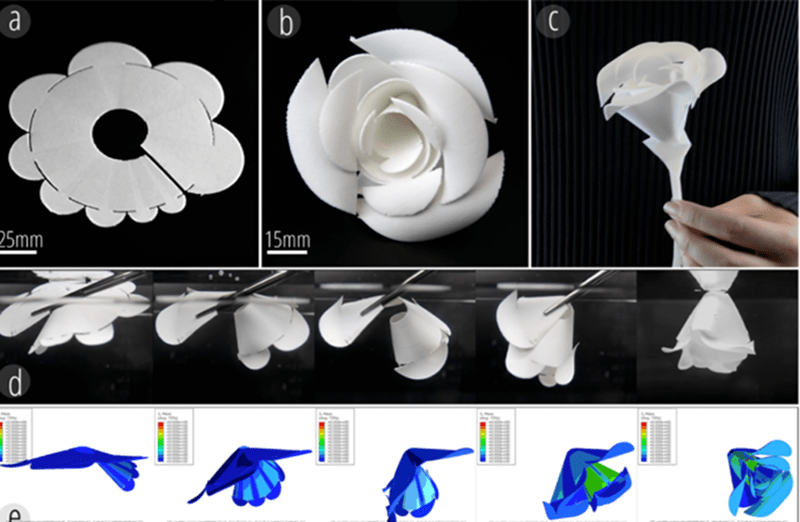If you’ve done much 3D printing, you probably curse how plastic warps as it cools down and heats. There’s nothing more upsetting than watching a six hour print start curling off the bed and starting its inexorable march to the trash can. However, researchers at Carnegie Mellon have found a way to harness that tendency to warp with heat to make self-folding structures like those seen in the video below. There’s a paper about how it works available, too.
The Thermorph process uses commercially-available 3D printers, but requires special software. You might wonder why you would want to fold, say, a rose, when you could just print it as a fully-formed 3D model. The paper suggests that printing self-folding structures is faster and can save up to 87% on print times for the right models.
The paper is a combination of material science, topography, and design. They use a browser-based modeling tool to determine the shapes to print, but it wasn’t clear if that software is available to others. Judging from the paper, they import a standard 3D model, simplify its mesh, unfold the mesh, and then make particular fold lines. The results are pretty impressive.
Printing is really becoming mainstream these days with the Marines printing parts and guest appearances on Lost in Space. Being relatively new — at least in common use — there are bound to be many new techniques in the days ahead. It remains to be seen which will stand the test of time and which will be essentially dead ends.
















Any sufficiently advanced Maker should be indistinguishable from a sorcerer. ✨
And advanced hacker should be indistinguishable from an evil sorcerer?
A warlock maybe? They seek and possess arcane knowledge and they form pacts with eldritch horrors in exchange for great power. ????
Topology surely?
is it really origami with all these cuts and no real folds?
I don’t think so, it is also not paper craft. Maybe it is an Ikea flower it comes flat packed.
Whatever you want to call the process is clever and makes me think good job Carnegie Mellon.
Likely, there isn’t a unique word, Origami was just the best fit. Not to mention, there are several “Origami” products, like, boxes, totes. shelving, probably a whole line of storage solutions. The products are pretty far from what I ever learned of paper-folding. There are a lot of non-traditional origami, that don’t necessarily use a single square of paper, even allow cuts. Never really interest me that much, sort of like cheating. I understand that it makes things simpler, appeals to new people, allows for some more intricate folds.
Think this is just a begining, some pretty cool stuff will happen in the future. Would be cool if it could transition back and forth, between states, put back flat when you are finished playing for the day…
It’s an emergent technology, a totally new technique. We can call it whatever we want, something’s bound to stick!
Without publishing the code it’s not gonna get the attention it might be. Kind of silly that this is not the norm yet.
The norm is patent and make sure that every major player license it…
That looks pretty simple. I bet you could reverse engineer that. From the images they print it flat, one layer thick then use cold water to accelerate the warping. Does that look like a golden ratio to you?
Wasn’t there something earlier called 4D printing? e.g. time is used to shape it.
https://en.wikipedia.org/wiki/Four-dimensional_printing
https://all3dp.com/1/4d-printing/
https://www.sculpteo.com/blog/2017/10/25/4d-printing-a-technology-coming-from-the-future/